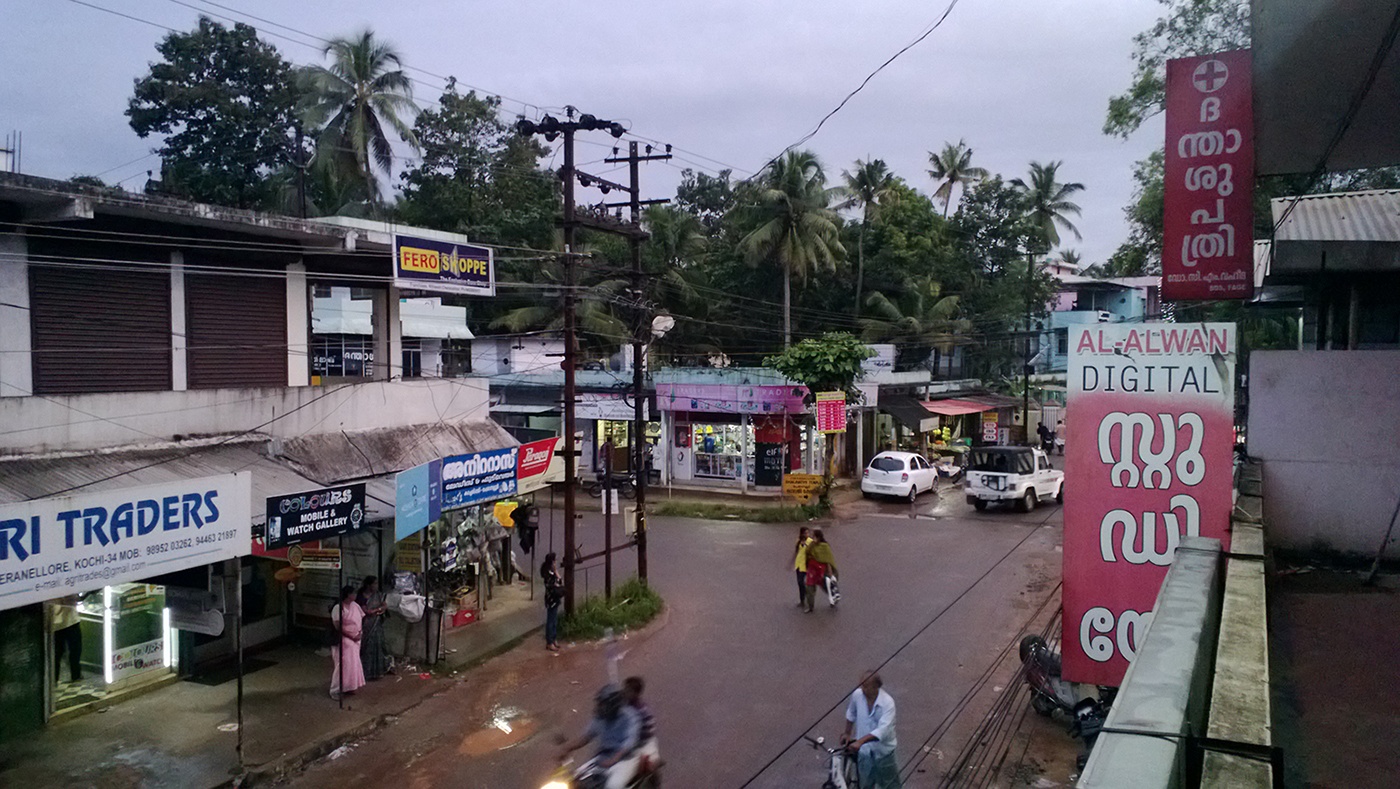Cacherippady bus stop, Cheranalloor Rd, Edapally 09132013
FC-01x Future Cities (1st Run) - Task 2

Uploaded on 2014-12-04 by CarlesTuca
This picture was taken more than one year ago. It was another rainy evening during the second monsoon in south west India. To be more specific, this is Ernakulam, a city of 2.026.000 inhabitants (2010) with a high growth rate, expecting to reach more than 3.000.000 inhabitants by 2025. Its GDP was higher than 7 billion dollars in 2010, but it is expected to be higher than 45.5 billion dollars by 2025, this means that it will increase its GDP more than 6 times. Among all its income sources we can highlight its chemical industry, oil refining, trade and export of goods. The city counts with one of the biggest harbours in the Arabian sea and airport and two main railway stations. Apart from its high bus connectivity Ernakulam will have its metro working by June 2016. The paragraph above describes the standard prediction scenario for a tropical city explained during the course. I chose this picture to follow the emphasis that the lectures put on electricity. If we look carefully we can see the consequence of our dependency on this energy source all around. Wires pass in front of the buildings in both sides of the street, some of them cross from on side to another, electricity posts and transformer stations stand nearby the crossroads. Nowadays, means of electricity distribution reach nearly every corner of an urban surface. I would like to point out, something already said during the lectures. The exposition of electricity infrastructure in dense areas or near communication routes is dangerous and can lead to dramatic situations, specially in high voltage networks. Under ground infrastructure is not only safer, it also avoids problems in urban mobility design and solve aesthetic issues. Finally, just say that in my opinion, we have to move towards the direction that will let us produce electricity in small centralized stations for and optimized number of dwellings or at least in our own homes. It is also true that some buildings or clusters would still depend on high amounts of electricity that might be difficult to generate in situ. This is the case of industrial or business clusters, where big machinery would spend a lot of energy or a big number of high-raise hotels and office buildings would need big amounts of electricity in a certain moment. For instance, when thousands of businessmen wake up and take their hot water shower, all at the same time. Sources: [*Urban World App*][2], and [*Wikipedia*][3] [1]: https://edxuploads.s3.amazonaws.com/14176869947717509.jpg [2]: https://itunes.apple.com/us/app/urban-world/id600995019?mt=8 [3]: http://en.wikipedia.org/wiki/Economy_of_Kochi